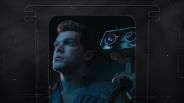Smartphones have steadily absorbed the roles of countless single-purpose devices, from music players to GPS units. For Ralf Cheung, a software engineer and entrepreneur, the idea that they could also replace dedicated dashcams came from a simple observation during daily school runs.
Many drivers, he noticed, were cluttering their windshields with both a navigation app and a dashcam. That redundancy sparked a project that would grow into DashMap, an application designed to serve both functions all at once.
How DashMap Makes Dashcams Safer and Easier
From a young age, Ralf Cheung had been founding and building small products across varied sectors like home furnishings and transportation, and each venture sharpened his ability to adapt ideas to market realities, from early design decisions to user adoption. Those lessons gave him what he calls a "holistic view of building, growing, and fine-tuning products," a mindset he later brought to his larger-scale work in engineering.
The idea for DashMap surfaced in 2022 while on one of his daily runs. Cheung noticed drivers juggling both a dashcam and a smartphone on their windshields—a setup that seemed unnecessarily redundant and could greatly increase the risk of an accident. "Most people use their phone for navigation and buy a dashcam for safety. Why not use your phone to do both?" he recalls. That realization became the spark for a new kind of mobile application.
DashMap was built to combine the two devices in a single interface, drawing on the advanced, high-resolution cameras already present in smartphones. The app captures clear video evidence (even in low light) while simultaneously providing turn-by-turn navigation. Just as important, it removes the hassles associated with traditional dashcams: no dismantling of car panels for installation, no awkward file transfers, and no extra hardware cluttering the windshield.
Beyond convenience, the app addressed safety concerns. DashMap recordings were stored directly on the phone, allowing drivers quick access if they ever needed proof in an accident. As Cheung puts it, "Downloading video from a dashcam is often painful. With DashMap, the video is right on the phone."
For drivers abroad, particularly those using cars without built-in dashcams, the portability that DashMap offered added a welcome layer of reassurance and safety in both their surroundings and their driving.
Improving the Product's Internal Performance
Turning a smartphone into a dependable dashcam-and-navigation tool meant dealing with unexpected technical issues, the most persistent being heat. Phones mounted on windshields and running both GPS and camera functions were prone to overheating and shutting down. "Heat is our biggest enemy," Cheung explains. "From improving its text rendering methods and testing different layers of screen brightness, we spent a great deal of time solving this problem."
Over time, the team responded by improving performance wherever possible. Video rendering was shifted to the Metal GPU framework, Apple's system that can handle graphics directly on the GPU, cutting CPU load by over 50%. A dashcam-only mode dimmed the screen to reduce both driver distraction and energy use, while network requests were disabled during trips to prevent additional strain on the device. For drivers in hotter climates, DashMap also recommended car mounts with built-in cooling fans.
These adjustments reflected a deliberate tradeoff. By treating the phone almost as if it were offline during trips, the app could operate reliably without interruptions.
Scaling Through Strategic Partnerships
After DashMap's launch on the App Store, its reach expanded rapidly thanks to an unexpected partnership. While on a family vacation in Japan, Cheung experienced the difficulties of navigating snowy mountain roads in a rental car that he'd never driven before. The trip sparked a realization: rental drivers are prone to causing higher accident risks than locals, given that many users are driving a car that functions differently from their own, with the added problem that the cars themselves often lack the safety net of a dashcam.
Back in Hong Kong, Cheung approached EGL Tours, the city's largest travel agency, with the idea of offering DashMap to their rental customers. The agency quickly saw how this might be of great use to tourist travelers, many of whom don't speak the local language and might have trouble communicating with others if they found themselves in an accident. "They were instantly interested in the product because it gave their customers peace of mind and practical support in situations that are already stressful," Cheung recalls.
Through this partnership, DashMap gained a new distribution channel, helping travelers document incidents and drive through unfamiliar roads with added confidence. Engagement metrics reflected the impact: app usage climbed to 10,000 users, with average sessions lasting 22 minutes, which showed the practicality that the platform had on its users.
Cheung's Next Steps
Following the launch of DashMap, Cheung took on a role as a software engineer at Uber, where he carried his entrepreneurial mindset into the high-stakes environment of post-acquisition integration. He built and managed a 14-person global engineering team across Hong Kong and India, balancing the infrastructure priorities of one group with the business-driven initiatives of another.
DashMap demonstrated how smartphones become tools that actively improve driver safety. And for Ralf Cheung personally, it stands as a professional milestone and a reminder of his approach to problem-solving: that everyday challenges, when met with technical rigor and a clear focus on how the end product will look, can lead to solutions with lasting impact.
ⓒ 2025 TECHTIMES.com All rights reserved. Do not reproduce without permission.






